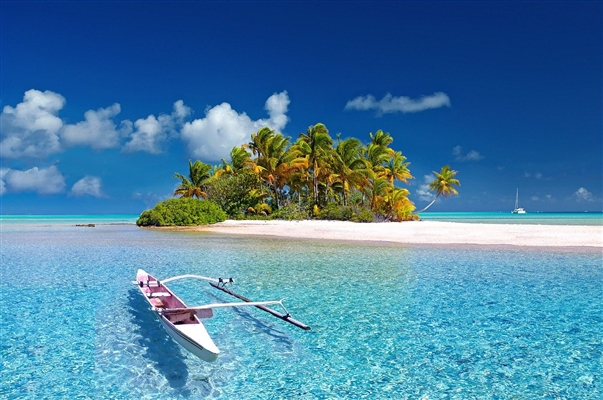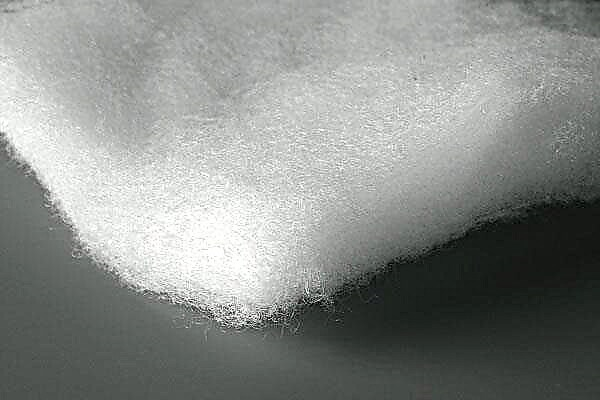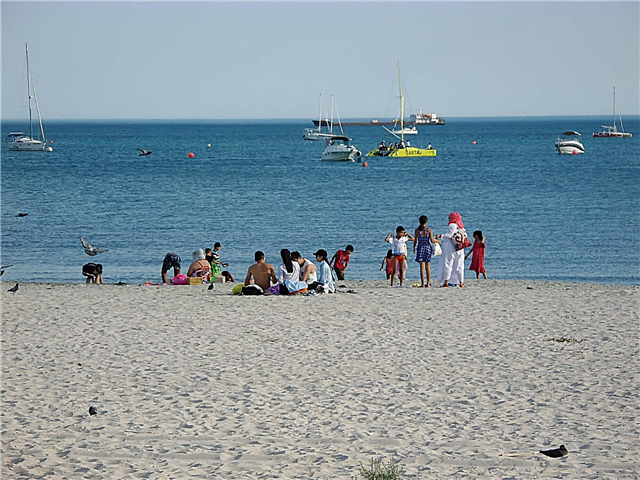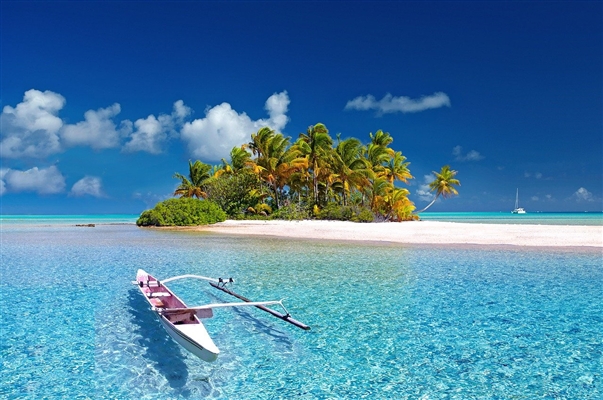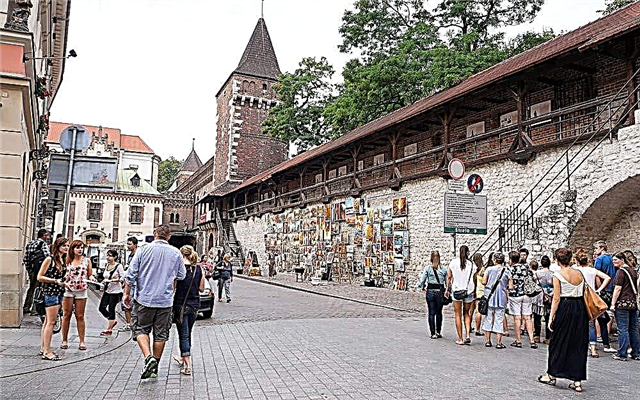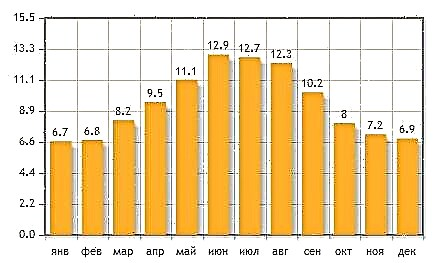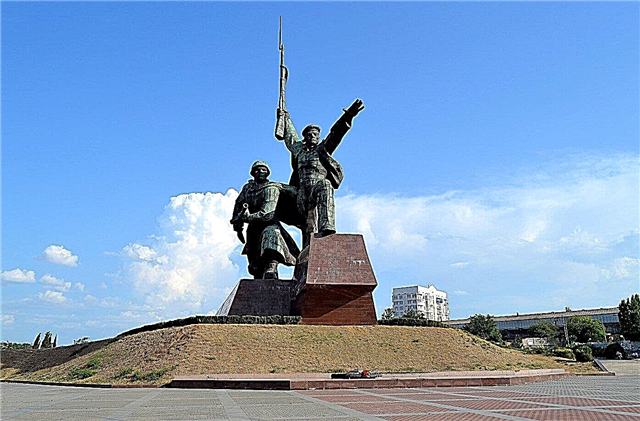Although Sevastopol is not yet 250 years old, the city is rich in historical events. The fighting took place both on land and on water. In addition, the area is inextricably linked with the baptism of Prince Vladimir, and therefore with the adoption of Orthodoxy in Russia as a whole. Do not write off the ancient heritage of Sevastopol.
To varying degrees, all this is reflected in the monuments of the city. Many of them are concentrated on the Historical Boulevard, Malakhov Kurgan, as well as the 35th Coastal Battery. These are iconic places, and every monument or memorial sign has a reason to be right here. Using them, you can easily study the main events of the past and understand which famous personalities had a strong influence on Sevastopol.
Historical and modern monuments of Sevastopol
List of the most popular monuments and sculptures in the city.
Monument to the Scuttled Ships
Appeared in the Sevastopol Bay in honor of the celebration of the 50th anniversary of the city's defense during the Crimean War. Then it was necessary to sink about 80 ships in order to block the enemy's approach to the coast. The composition appeared right on the water. On an uneven, block-made isle stands a stele, and on it an eagle with many symbols, including an anchor, a crown, a laurel wreath and a shield with the image of St. George the Victorious.

"Sailor and Soldier"
The monument is about 40 meters high and is one of the largest in the history of the USSR. The idea to celebrate the feat of soldiers and sailors who defended the city arose in 1972. For more than a decade they have been struggling to implement it. However, the work of the project team was frozen for many years. They decided to finish the composition only in 2004. At the same time, the territory around them was ennobled. The official opening took place in 2007.

Obelisk to the Hero City of Sevastopol
A bayonet and a sail merged in the composition. The obelisk was opened in 1977. One side depicts all the awards the city has ever received. The height of the monument is 60 meters. Given its location on the Crystal Cape, it is visible from afar. The obelisk is also decorated with scenes of the heroic defense of Sevastopol. It depicts not only the military, but also the underground, who significantly complicated the life of the fascists.

Tower of Winds
Initially, the building served as a ventilation function for the book depository at the Maritime Library. The style of architecture resembles ancient buildings. Antique bas-reliefs only add color to the composition. During the defense of the city, an observation post was located in the tower, all information flowed here and official reports were sent. It is impossible to get inside from the first floor.

Monument to P. S. Nakhimov
The opening ceremony in 1898 was attended by Nicholas II. After the revolution, the monument was destroyed, and a sculpture of Lenin was subsequently erected in its place. In 1959, the "leader of the world proletariat" was moved to another part of the city, and the monument to Nakhimov was revived. The structure turned out to be composite. Its total height is 12.5 meters. The base of the pedestal is decorated with a banner and a bas-relief depicting scenes from their lives by Nakhimov.

Monument to A.I.Kazarsky
Officially recognized as the first monument of the city. Year of installation - 1893. Glorifies the feat of Lieutenant-Commander Kazarsky and the team of his brig "Mercury". The ship collided with two enemy warships and won an unequal battle, yielding both in guns and in crew size. The architect K. Bryullov was responsible for the creation of the composition. Nicholas I ordered the inscription on the monument: “Kazarsky. For posterity as an example. "

Monument to E. Totleben
Located on the Historical Boulevard. In 1854-1855, a military engineer became famous during the defense of the city. Totleben's exploits were immortalized in 1909. The composition is very realistic. The figure of Eduard Ivanovich himself is located above, and below are soldiers of different types of troops. During the Second World Monument, the head was torn off, but it was promptly restored in 1945.

Memorial in honor of the heroes of the second defense of Sevastopol
The complex, like the alley of the hero cities, is located on Nakhimov Square. The memorial is a massive wall depicting a warrior and enemy bayonets directed against him. Plates with the names of the heroes of the USSR and the names of the units that participated in the defense are installed below. Installation took place in 1967. The alley was opened only in 2005, and it is similar to the Moscow one: small steles with the names of cities and orders.

Monument to Catherine II
The Empress at one time signed a decree on the name of Sevastopol. During her reign, many significant events related to Crimea took place. In 2008, the contribution of Catherine II to the history of the city was marked by the installation of a monument. The sculpture of the queen was erected on a round column. She was dressed in a ceremonial dress, and the symbols of state power were placed in her hands. The total height of the composition exceeded 6 meters.

Monument to Vladimir the Great
Location - Maiden Mountain. The installation took place in 1993. There is nothing belligerent in the figure of Vladimir. He leans on a large cross with one hand and holds a shield with the other. The area is associated with the baptism of Rus, so the choice of the motive for the monument is clear. Vladimirsky Cathedral is located nearby. It stands on the ruins of the Church of St. Basil, also related to the history of the adoption of the prince of Orthodoxy.

Monument to V. Lenin
One of the largest monuments to Lenin in the USSR was opened in 1957. The event was timed to coincide with the 40th anniversary of the revolution. The monument is located on a dais next to the Vladimir Cathedral. The bronze composition reaches a height of about 20 meters. Along the perimeter of the pedestal, on which the figure of Lenin stands, there are sculptures of a worker, collective farmer, soldier and sailor, made in the same style.

Monument in honor of the 200th anniversary of the founding of Sevastopol
It is located in the historical part of the city, where the first buildings of Sevastopol were located in the past. The opening took place in 1983. Made in a restrained style and similar to the monuments in honor of the first defense of the city. A low stele with a built-in cannonball is surrounded by a curb and steps. A capsule with a message to descendants was laid at the base in 2000. It should be opened a century later.

"Courage, fortitude, loyalty to the Komsomol"
This monument was created in honor of the Komsomol members of Sevastopol. They not only took part in battles in the early years of the Great Patriotic War, but also took an active part in the restoration of the city after. The composition consists of a soldier with a weapon in his hands, a wounded sailor and a nurse. Their figures are made of organic glass, but stylized as bronze. When installed in 1963, a capsule with a message was laid at the base.

Monument to Admiral Kornilov
The place for the installation was chosen as a symbolic one. It was here on the Malakhov Kurgan that the admiral was mortally wounded. The first monument to Kornilov was a cannonball cross. It was posted on the orders of Nakhimov. In 1895, bronze details were brought from St. Petersburg and a full-fledged sculptural memorial was assembled. The Nazis blew up the monument, but it was recreated in its former form and reopened in 1983.

Monument of Glory to the soldiers of the 2nd Guards Army
One of the city's monuments in honor of the soldiers who conquered the city from the Nazis. Unlike other monuments, it was founded immediately after the end of the fighting and opened in May 1944. Its author A. N. Chankvetadze himself took part in the battle. The Order of Glory was subsequently placed on the wide obelisk. There are 4 smaller obelisks around, and a mass grave nearby. In the 90s, the memorial was restored.

Monument to Taras Shevchenko
The monument was a gift to the city from the ethnic Ukrainian Vasyl Sventitsky, who lives in Canada. It was created by local sculptors and architects. The opening took place on the Independence Day of Ukraine in 2003.Shevchenko is depicted in full growth, and a sculpture is installed on a pedestal about 4.3 meters high. In 2016, an unsuccessful attempt was made to demolish the monument, as undesirable by some "Ukrainian heritage".

Memorial complex "Sapun Mountain"
The hill itself is a natural barrier that does not allow access to the city. There have been major military clashes three times in the foreseeable history. The last time the fighting took place was in World War II. The complex began in the late 40s with a military field museum, to which the Eternal Flame and the park were gradually added. Every year there are reconstructions of the assault on the mountain, timed to coincide with important dates.

Monument to the Soldiers of the 77th Infantry Division
The memorial on Sapun Mountain is dedicated to the Azerbaijanis who participated in the liberation of Crimea during the Great Patriotic War. The complex was installed directly on the site of the battles in 1974. When creating the project, all materials, including sand and slabs, were brought from Baku. In 2009, the monument was almost completely destroyed by vandals. The perpetrators were punished, and the memorial was restored and inaugurated in 2011.

Catherine mile
This road sign is a monument of history and architecture. It was installed in the 80s of the 18th century. There were several such designations along the path of the Empress to inspect the new possessions, but only one sign has survived. The structure is modest in size. However, it has a value as the oldest of the buildings of the Russian period in the city. It is noteworthy that the date of Catherine's voyage is indicated on a mile with an error.

Monument to A.V.Suvorov
It has been located on the square of the same name since 1983. The authors of the project wanted the bronze bust of the commander to be clearly visible from afar. For this reason, it was placed on a lighter granite pedestal, which is 3.34 meters high. The name of the commander is written on the cartouche. When creating the image, the sculptors did not forget about the medals and orders that adorned Suvorov's uniform. His face is turned towards the South Bay.

Monument to the Black Sea Aviators
Three pylons with a height of 32 meters were installed in 1981. The ceremony was timed to coincide with the 60th anniversary of the founding of the Black Sea Fleet Air Force. They are crowned by airplanes directed upward, and the names of the military are inscribed on the pylons themselves. Local aviation showed itself during the Great Patriotic War. More than 60 pilots received the title of Hero of the USSR. Since the monument is not officially entered in the register, it is not protected by the state either.

Monument to Pushkin at Cape Fiolent
In 1820, Alexander Sergeevich visited the Crimea and the St. George Monastery located here. On the occasion of the 200th anniversary of the poet, a monument was unveiled near this place, on the reverse side describing the history of Pushkin's visit to Cape Fiolent. However, the owners of the land from the dacha cooperative were outraged by the installation of the composition. The monument was demolished and for more than 10 years they tried to negotiate with the residents. It was returned to its original place only in 2011.

Steam locomotive of the armored train "Zheleznyakov"
This unusual monument can be found near the bus station. "El-2500" was released in 1941. It was thanks to him that the Zheleznyakov armored train was on the front line at the right time. Among the fascists he had the nickname "green ghost". After the war, the locomotive went through repairs and returned to the tracks for peaceful missions. In 1967, "El-2500" was decommissioned and transferred to Sevastopol for eternal parking.

Monument to George the Victorious
One of the main attractions of the large Victory Park. The opening took place on the day of the 220th anniversary of the city. The author of the project was V. Klykov. The 30-meter column has become a kind of pedestal for the bronze statue of St. George the Victorious. There are flower beds around, benches and lanterns with figured forging are installed. After the reconstruction, it turned out to be a full-fledged area for walking and relaxation.

Memorial sign to the sailors of the squadron of the Black Sea Fleet
It appeared on the retaining wall of the embankment of Primorsky Boulevard in 1979. On the plate located in the center of the arch, the names of the ships that proved themselves in the battles with the Nazis were inscribed. On the sides of the arch, there are 4 more large signs with exit information. At the base are the outlines of the Black Sea. Large cities and ports are plotted on this "map". Anchors and cannonballs complement the composition.

Monument to the sailor Peter Koshka
It is located opposite the monument to the Black Sea submariners since 1956. Peter Koshka was a participant in the Battle of Sinop. He repeatedly made forays into the camp of the enemy, and also showed resourcefulness. According to legend, the sailor saved Admiral Kornilov from the explosion. Anchors and cannonballs are located next to the pedestal on which the detailed bust is set. The restoration of the monument took place in 2004.

Monument to Admiral F.F.Ushakov
Opened in 1983. When designing the monument, the authors relied on a portrait created by M. Gerasimov, a well-known anthropologist. The naval commander had a positive impact on the development of the Black Sea Fleet. He ended up in Kherson as an experienced military man and was able to competently apply this experience in practice in new conditions. His bust is made in a classical style and, together with the pedestal, has a height of 4.35 meters.

Monument to Cyril and Methodius
As a place to erect a monument to the authors of the Slavic alphabet, they chose a square near the church on Central Hill. Cyril and Methodius stand on a large stone, and their heads are crowned with halos. The composition turned out to be colorful, although the masters took only two weeks to create the figures. Other stages of work turned out to be operative, which distinguishes the monument from many others in the city.

Monument to Admiral D. Senyavin
The installation site is Nakhimovsky prospect. There is also a wide staircase nearby that leads to Matrossky Boulevard. The opening took place in 2014. The admiral is depicted in full growth and rests on a large ship's anchor. With the help of the monument, the authors of the project wanted to note the contribution that Senyavin made to the formation and development of the Black Sea Fleet. The sculpture replaced the commemorative sign "10 years of the Ukrainian Navy".

Chersonese bell
Initially, the bell arrived in the city by order of Alexander I and was supposed to take its rightful place in the Cathedral of St. Nicholas. However, the war thwarted these plans, and all the bells went to France. It took about 10 to get them back. The bells were installed in the Kherson monastery, and after its abolition they were melted down. Only one has survived, which still adorns the coast and is a signal one.


